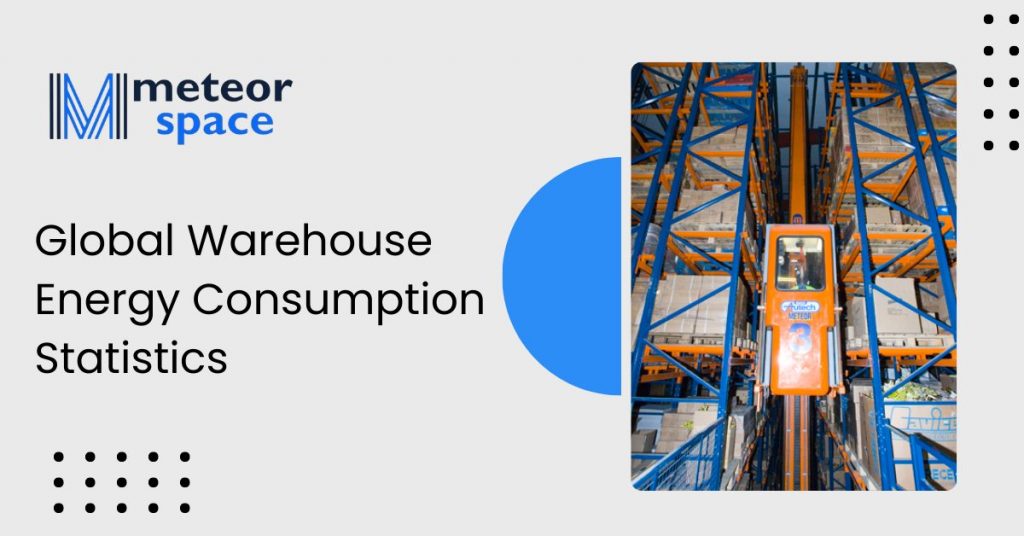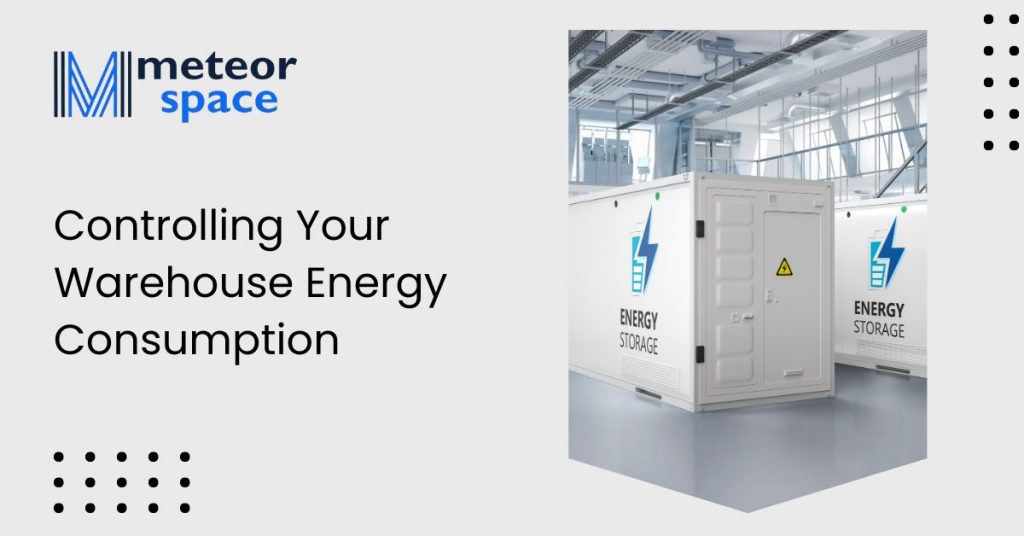
25+ Warehouse Energy Consumption Statistics You Need To Know
25+ Warehouse Energy Consumption Statistics You Need To Know
Here are some of the most important warehouse energy consumption statistics that you need to know and understand
Here are some of the most important warehouse energy consumption statistics that you need to know and understand.
Running a business means understanding and managing the energy consumption of your warehouse operations. By lowering energy usage, you can significantly cut expenses while making your business more eco-friendly and ethical.
Energy is a major cost driver for businesses operating warehouses and fulfillment centers, including those in Northern Ireland. Various aspects of warehouse operations, from ecommerce order fulfillment to pick and pack services, consume energy and impact overall costs. Improving cost efficiency often starts with reducing energy consumption.
To take effective steps towards lowering energy usage, it’s essential to understand how energy is consumed and which processes are the most energy-intensive. This knowledge allows for informed decision-making to benefit your business.
Let’s explore key warehouse energy statistics to help you optimise your operations!
Global Warehouse Energy Consumption Statistics

Running a business means understanding and managing the energy consumption of your warehouse operations. By lowering energy usage, you can significantly cut expenses while making your business more eco-friendly and ethical.
Energy Consumption in Buildings: The energy consumption of buildings is a critical factor for the profitability of companies, accounting for nearly 50% of their overall expenses (Our World in Data). This high energy consumption can be the leading cost for many businesses. Lowering energy consumption is crucial not only for reducing overhead expenses but also for enhancing sustainability and eco-friendly operations. In today’s age, managing energy consumption is a massive challenge that requires effective measures.
Warehousing Costs in the U.S.: In the United States, warehousing costs can account for almost 10% of a company’s revenue. Many companies face high costs for warehouses and storage facilities, primarily due to significant energy consumption (Our World in Data) (IEA). Whether dealing with refrigerated or non-refrigerated warehouses, energy costs can drain revenue and hinder profitability. Effective energy management can mitigate these high costs and improve business efficiency.
Energy Consumption of Non-Refrigerated Warehouses: An average non-refrigerated warehouse consumes approximately 6.1 kilowatt-hours (kWh) of electrical energy per square foot each year (Our World in Data). Additionally, these warehouses consume about 13,400 Btu of natural gas per square foot annually (Our World in Data). This high energy consumption necessitates finding ways to lower usage to reduce costs and environmental impact.
Energy Consumption of Refrigerated Warehouses: The electrical energy consumption is even higher than 6.1 kilowatt-hours (kWh) for warehouses that are refrigerated. Compared to a non-refrigerated warehouse, a refrigerated warehouse consumes significantly more electrical energy, leading to higher expenses and a larger environmental footprint (Our World in Data) (KPMG).
Refrigeration in Warehouses: When it comes to refrigerated warehouses, refrigeration accounts for 60% of the electricity used. Unlike non-refrigerated warehouses, where lighting and heating take up most of the electrical energy, refrigeration is the primary energy consumer in refrigerated warehouses. To keep energy consumption rates low and manage expenses better, businesses need to find more sustainable and affordable alternatives, which can also make operations more environment-friendly (Our World in Data) (KPMG).
Heating and Lighting: Heating and lighting are responsible for 76% of the total energy consumption in warehouses (IEA) (Our World in Data). Proper lighting and heating are essential, but businesses can explore energy-efficient alternatives to reduce consumption. These improvements can significantly cut costs and contribute to sustainability efforts.
Computers and Ventilation: Computers and technology are integral to modern warehouses, accounting for 6% of the electrical energy used in non-refrigerated warehouses. Ventilation systems consume about 5% of the electrical energy (IEA) (IEA). While these percentages are relatively small, optimizing energy use in these areas can still contribute to overall energy savings and efficiency.
Cooling and Refrigeration: Cooling systems account for 14% of the electrical energy consumption in non-refrigerated warehouses (Our World in Data) (IEA). Even non-refrigerated warehouses often have small refrigerated sections, which consume about 6% of their total electrical energy. Finding alternatives to electrical energy for cooling operations can be beneficial, but the importance of maintaining the appropriate temperature for stored goods cannot be overlooked.
Natural Gas for Heating: Approximately 87% of the natural gas used in warehouses is for heating purposes (IEA) (KPMG). Exploring alternative heating methods can help reduce natural gas consumption and associated costs. This shift can also support environmental sustainability by lowering reliance on fossil fuels.
Overall Energy Costs: Overall, energy costs account for roughly 15% of warehouse overhead expenses (KPMG) (IEA). Managing these costs is challenging, but reducing energy consumption can significantly lower overhead expenses, saving money and resources.
Controlling Your Warehouse Energy Consumption

Energy Management Programs: According to reports, properly run energy management programs targeting energy efficiency can save 5% to 20% on energy bills without significant capital investment (KPMG). Effective energy management programs help reduce costs and lower a warehouse’s energy consumption rates, aiding in sustainability.
Vertical Warehousing: Vertical warehousing helps some companies beat the high cost of land, cut transportation costs, and reduce the warehouse’s environmental impact (KPMG). Vertical warehouses take up less land, reducing costs and environmental impact.
Energy-Efficient Buildings: By reducing the space required for storage and retrieval operations, organizations can construct smaller, more energy-efficient buildings, shrinking the construction footprint by up to 15% (KPMG). Vertical construction can be more cost-effective and environmentally friendly.
Solar Panels: Many companies across the U.S. have installed solar panels on their warehouses to generate natural energy directly from the sun during the daytime (IEA) (KPMG). Solar panels offer a renewable energy source that can be more cost-effective in the long run.
LED Lighting: LED lights use much less energy and last up to eight times longer compared to tungsten GLS lamps (IEA) (Our World in Data). Upgrading to LED lighting can save energy and reduce greenhouse gas emissions significantly. For example, upgrading to an LED lighting system across 1.2 million square feet of warehouse space is projected to save more than 2 million kWh annually, eliminating the emission of 2.7 million pounds of greenhouse gases each year (KPMG).
Networked Lighting Controls: Networked lighting controls can save 70% to 80% of energy consumed in warehouses (KPMG). These systems ensure that lights are only on when needed, reducing unnecessary energy use.
Outdoor LED Lighting: Upgrading outdoor lighting to LEDs can result in more than 30% savings on energy consumption expenses (KPMG). This change lowers overall overhead costs.
Automated Equipment: In the food supply chain, automated equipment is a key energy-efficient improvement. Automated systems help reduce energy consumption and enhance operational efficiency (Our World in Data).
Hydrogen Fuel Cells: Compared to lead-acid batteries, hydrogen fuel cells produce zero harmful emissions, with only water and heat as byproducts (KPMG). Using hydrogen fuel cells can make warehouse operations more environmentally friendly.
Refrigeration Controllers: For refrigerated warehouses, controllers that initiate defrost cycles based on actual ice buildup are more effective than those that run on timers (IEA). This method ensures efficient defrosting and energy use.
Waste Heat Recovery: Waste heat from condenser coils can be recovered and used for domestic water heating, reducing natural gas consumption and improving energy efficiency (IEA) (KPMG).
HVLS Fans: HVLS fans save energy by improving airflow, which allows you to raise the temperature in your facility by as much as 4.5°F (2.5°C) while still maintaining occupant comfort (IEA). These fans enhance energy efficiency and maintain a comfortable environment.
Team Up With a Leading 3PL to Control Your Warehouse Energy Consumption
If you are a business looking for ways to lower your warehouse energy consumption, you have come to the right place! One of the best steps you can take to cut down the energy consumption costs for your business is to outsource your warehousing and fulfillment processes to a leading 3PL, like Meteor Space.
When you outsource your warehousing and fulfillment processes to a 3PL, you no longer have to build or manage your own storage facility or fulfillment infrastructure. You can sit back and relax as the 3PL company will store your inventory in their warehousing facility and fulfill orders from their own fulfillment center. This approach is particularly beneficial for businesses involved in ecommerce order fulfillment, where managing inventory and timely deliveries are crucial.
A leading 3PL, like Meteor Space, can be the best option for you as we can grow with your business and help you maintain flexibility. We help you bring down your warehouse energy consumption expenses and become more sustainable and eco-friendly. Here at Meteor Space, we make sure that all your inventory is managed effectively and your customers receive their orders on time. Our fulfillment centers are equipped with advanced energy-efficient technologies and practices, ensuring that your business operations are both cost-effective and environmentally responsible.
With our help, you can save money, lower your expenses, and use your time and resources to invest in other aspects of your business. Meteor Space takes care of your storage, inventory management, pick and pack fulfillment, shipping, and delivery, and so much more, all while adhering to sustainable and eco-friendly practices. Our pick and pack services are designed to optimize efficiency, reduce energy usage, and ensure accuracy in order processing.
By teaming up with Meteor Space, you can significantly reduce your warehouse energy consumption rates and unlock the full potential of your business. Our expertise in ecommerce order fulfillment and energy-efficient warehousing solutions will help you achieve your sustainability goals while enhancing your operational efficiency.
Get started today and make a positive impact on both your bottom line and the environment with Meteor Space!